This is part three of my back to school ice breaker blog. If you haven't seen parts one or two yet you can find them
here (part one) and
here (part two).
This blog will discuss processing. Processing the activity is just as (some would argue more important) than the experience itself. One thing I've learned is that trying to keep what I want to say in some blog-sized fashion isn't easy for me! I love this topic and could probably go on for ages! It allows both you as a facilitator to see and students as learners to explain what they got out of the activity. It is important that the activity and the processing have similar goals.
I will use the Helium Hoop activity from my last blog as an example. It is a very difficult activity to facilitate because success will not come easy. Students will struggle and there will be discord. As the facilitator, your job is to create an environment in which people feel empowered and welcome. This leads to some internal struggles when leading this activity.
(learning is the treasure!)
As teachers our natural instinct is to step in and 'help'; unfortunately 'help' generally means solving problems for the students - pointing out errors and offering solutions that have worked for us in the past. We become the leader.
This, however, takes power away from the students. It tells them that the teacher will 'bail them out' at the first sign of trouble. As difficult as it is for you as a teacher, the struggle that students are experiencing is important. It sets up a great lesson for them later: this class will be difficult at times, but you can persevere through it!
Helping them out and allowing them to have a quick success has other issues as well.
Here are the conditions that were set out for the helium hoop activity:
- All people need to touch the hoop at all times
- You can not 'grip' the hoop
- The hoop can't just drop to the floor
Those seem straight forward enough, but after ten minutes of failure, many teachers tend to get into solution mode. Since schools these days are 'final objective' or 'product' driven, those conditions may get blurred a bit. Sally 'accidentally' grabbed it with her finger and Lauren really didn't touch it at all? Close enough - the rest of the group seems ok (or didn't notice.) Besides, the hoop is down and we can celebrate success.
Let's think about the internal processing that is happening in this group. Sally now 'knows' that the rules are just general and may not apply to her. Lauren has learned that in group activities she can blend into the background and not have to worry about it. Other students may have seen Sally 'cheat' and are wondering why the teacher didn't say anything to her. Most students wouldn't say these thoughts out loud in a new setting (the forming stage), but this is what you have indirectly taught them.
These first activities are the foundation for culture in your room. How your run them and process them determines your initial success with building your culture. The art of being a strong facilitator is similar to being a great teacher - knowing where your students are and challenging them to reach that next level.
Here are my 5 keys to successful processing:
1)
Don't assume their learning - participants may have gotten different things out of the experience. Some may realize that they enjoyed a leadership role, others may find that they liked not being in charge. Some may learn that it was ok to trust and listen to a student they never really liked before. Still others may have just loved the activity itself. These are all good outcomes! They're learning - don't take their learning away!
2)
USE NAMES and model how to use names. You can't build a classroom culture if students are point and saying 'umm, him.' If you don't know a student's name, model how to ask. If students don't know each other's names, make sure they introduce themselves. If you are using activities and they aren't using names, you're doing it wrong!
3)
Don't judge effort. Phrases like "if you try harder...", "most people seem to care", or "stop ruining it for everyone" assume students want to fail. Even if a student is acting in a way that is showing she doesn't care, at some deeper level she is dealing with the current situation as best she can. This is a great chance to get to know the student and find out what is bothering her (or him!)
4)
Acknowledge difficulty. It's ok to say "this activity is difficult." That is a great lead into processing the activity later ("do you think there will be other activities this school year that will frustrate you?") People's behavior adapt to match their current beliefs about what it possible. If you hint that something is too difficult without your expertise, that is what they will believe. If you expand their beliefs, their behavior will expand and reflect the new possibilities. You present the door, but you have to let them open it up!
5)
Observe but don't connect. Let the students keep the power. You should make observations that helped the group - Phrases like "I really liked when Tammy called a break because the group was getting frustrated" help students see the importance of a time out, but you shouldn't make leaps such as "The group was successful because Tammy called the break."
With that, here is my third team building activity that I love playing early in the school year:
Protocol: Group Juggle
Materials: a couple of tennis balls, koosh balls, or other small, soft objects.
Procedure:
1) Everyone gets in a circle (sitting or standing works fine). Everyone should put their hands out.
2) You will start the game by saying a student's name and tossing the ball to him/her.
3) That person catches the ball, then says the name of another person in the circle (I tend to say you can't give it to the person to your left or right), and tosses the ball. The tosser then takes his/her hands and put them behind his/her back (this helps keeps track of who has had a turn.)
4) This process continues until everyone has received the ball once.
5) The final recipient says the teacher's name and tosses the ball back to him/her.
Round two:
Explain you are going to do the same thing again, but this time you might add a challenge:
- no drops (or one drop or three drops, depending on your group) during the cycle
- time limit of so many seconds
- having to say thank you to the tosser after each catch: "Thank you, Evan!"
As the group gets better, you can add even more challenge to the game:
- add a second ball that begins a few tosses after the first
- add a second ball that goes backwards while the first one goes forwards
- have the student say their favorite flavor of ice cream and then ask the next person (by name) what their favorite flavor is.
This is also a fun activity to process. Students tend to realize that they drop the ball when they aren't focused. They also realize that they become more focused when someone uses their name and makes eye contact. When a second ball is introduced (either forwards or backwards) students may talk about how they had to focus on one thing at a time rather than watch both objects at once.
I will be posting two more team building activities during the week. I'd love to hear some games and activities you have done to help build teamwork and culture in your class as well!

















